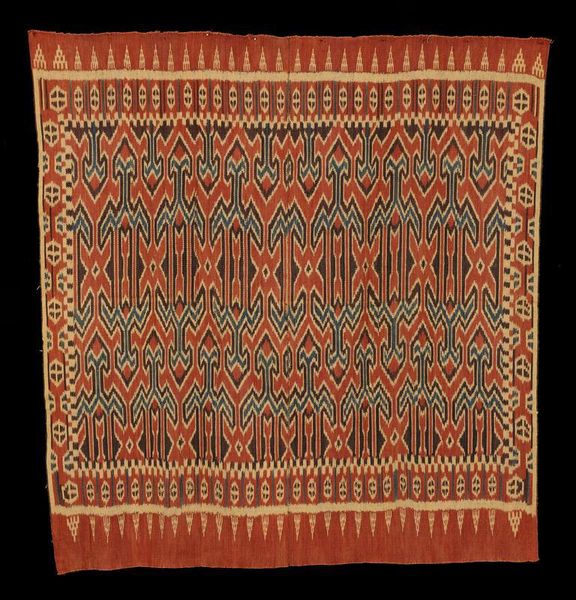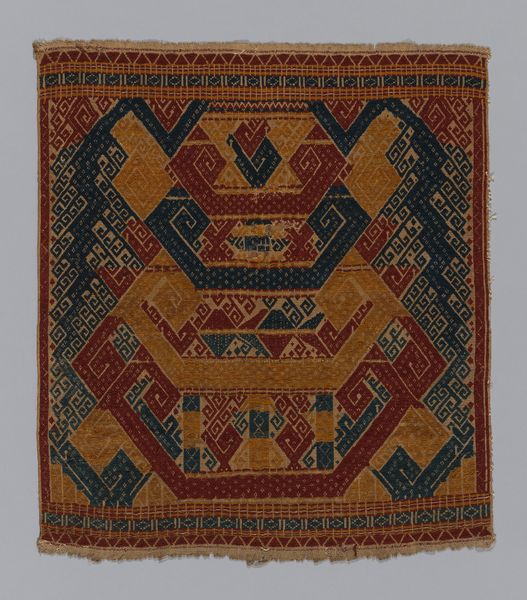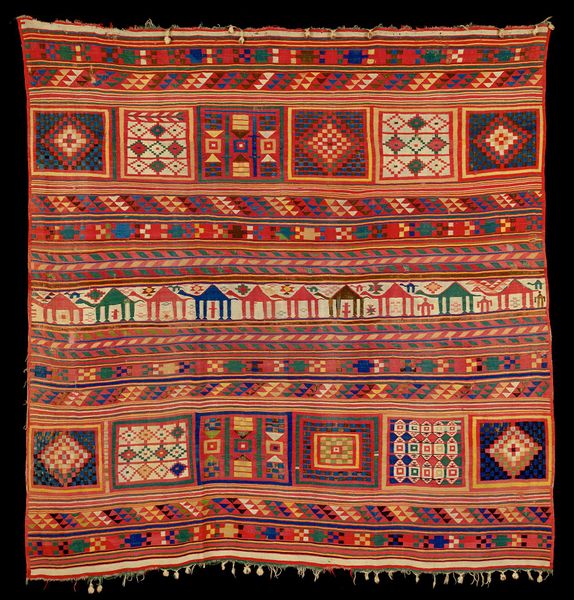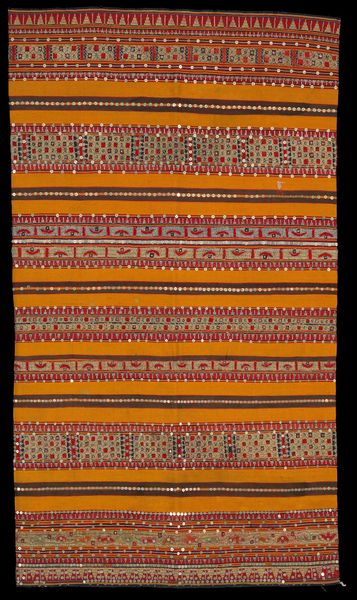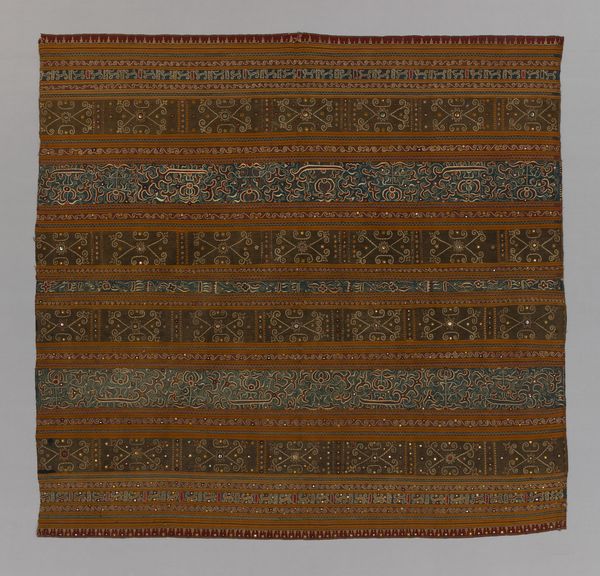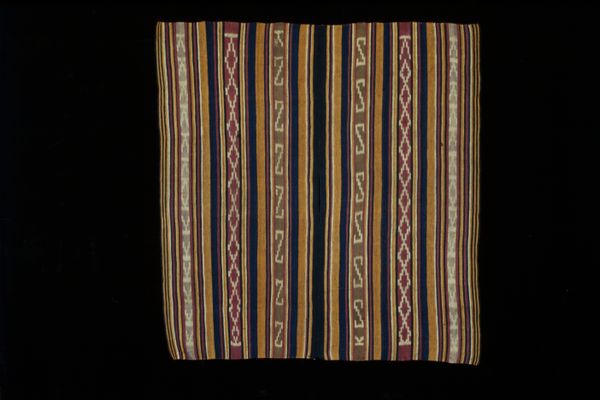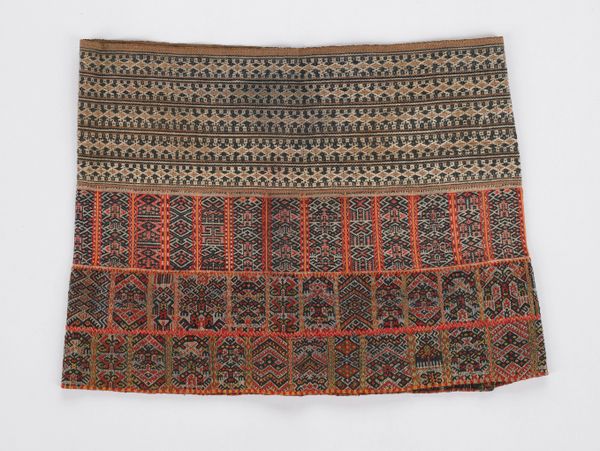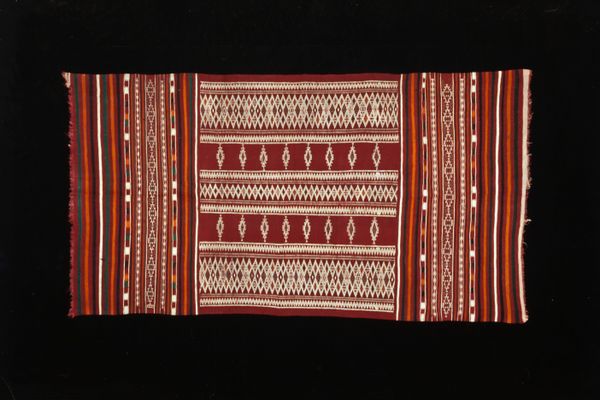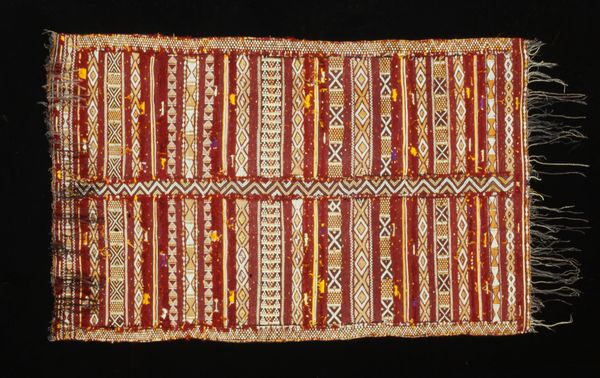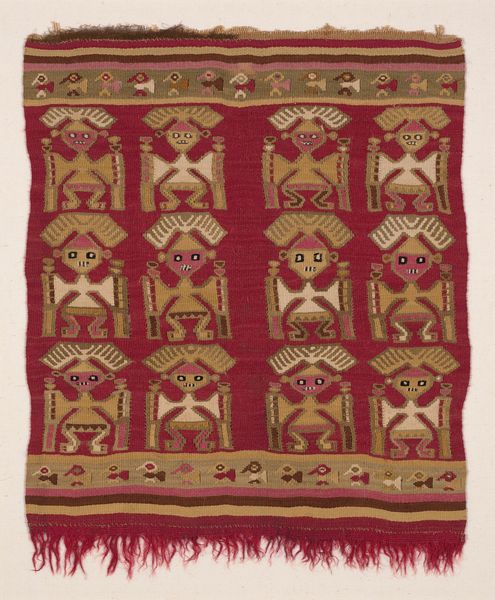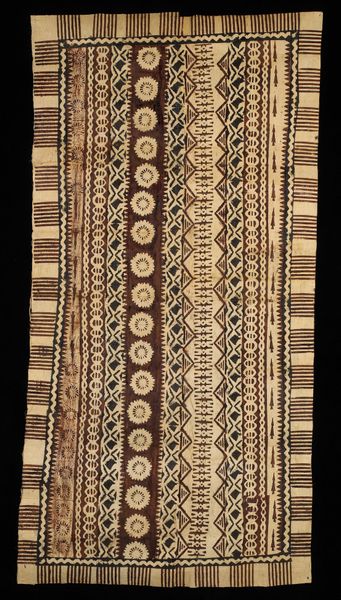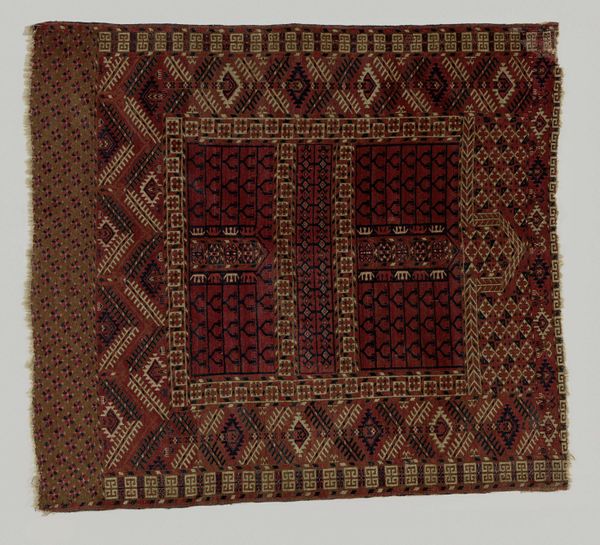
textile
#
textile
#
geometric pattern
#
geometric
#
decorative-art
Dimensions: 114.5 × 122 cm (45 × 48 in.)
Copyright: Public Domain
Editor: Here we have a Woman's Ceremonial Skirt, a 'Tapis,' from around the 19th century, currently at the Art Institute of Chicago. It is really captivating! The intricacy and repetitive nature of the patterns are so striking, it makes me wonder how it was made. What's your take on it? Curator: What strikes me is the way this skirt served as a crucial marker of identity and social status. Think about the labor involved; each motif painstakingly woven would contribute to its overall value and meaning within the Abung community. Do you see any particular repeating motifs that grab your attention? Editor: Well, there are these sort of bird-like figures across the top, and geometric shapes. I was also struck by the almost lettering. Curator: Exactly! The stylized motifs aren't just decorative. Scholars believe that these repeated avian symbols possibly alluded to certain clan affiliations. The lettering, or what appears as such, offers a glimpse into the interaction between indigenous artistry and potential colonial influences in the 19th century. Do you see how the piece, intended for ceremonial use, embodies social structures and the dynamic exchange between cultures? Editor: That’s fascinating, the textile becomes a document in itself! Curator: Precisely! It reveals details about social roles, and perhaps hints about intercultural relations within that society. These ceremonial skirts offer insights beyond simple decoration. They encapsulate a narrative waiting to be unpacked. Editor: I see now that it is more than meets the eye; it acts as an historical artifact with deep roots in culture. Thanks so much! Curator: My pleasure. Thinking about its reception today encourages reflection on how we exhibit and interpret cultural objects, while respecting their origin and cultural significance.
Comments
No comments
Be the first to comment and join the conversation on the ultimate creative platform.
